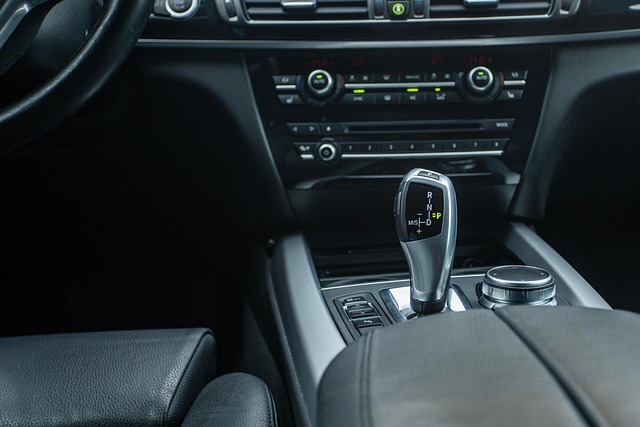Looking to register your car in California? This comprehensive guide walks you through every step, from understanding crucial VIN verification processes to gathering essential documents. Learn how to navigate the process smoothly, avoiding common issues that can delay registration. Discover insider tips for a seamless experience, ensuring your vehicle is legally registered and ready to hit California’s highways.
- Understanding VIN Verification in California Car Registration
- Gathering Required Documents for Car Registration
- The Step-by-Step Process of Registering Your Vehicle
- Common Issues and How to Resolve Them During Registration
- Important Tips for a Smooth California Car Registration Experience
Understanding VIN Verification in California Car Registration

In California, VIN (Vehicle Identification Number) verification is a crucial step in the car registration process. This unique 17-character code serves as a digital fingerprint for your vehicle, providing critical information about its make, model, year, and other specifications. When you register your car, the California Department of Motor Vehicles (DMV) requires that the VIN on the vehicle matches the one listed in the title or bill of sale. This step ensures that the vehicle is genuine and helps prevent fraud.
A mobile vin inspection or verification service can make this process even smoother. With a mobile vin verifier, you can have your car’s VIN checked against national databases to ensure accuracy, all while saving time and potentially avoiding long DMV lines. These services often provide immediate results, allowing you to register your vehicle promptly. They are convenient options for those who prefer not to visit a DMV or face issues with matching the VIN on paper documents.
Gathering Required Documents for Car Registration

Before you begin the registration process, it’s crucial to gather all the essential documents for a seamless experience. In California, you’ll need your vehicle’s Registration Application (Form DR659), which you can obtain from the Department of Motor Vehicles (DMV). Additionally, have your Vehicle Identification Number (VIN) ready—this unique code is often found on the vehicle’s title or driver’s side door jamb. Conducting a VIN verification through a trusted mobile vin inspection service can help expedite this step by providing instant validation of your car’s details.
Make sure you also collect any previous registration documents and proof of insurance, as these will be required to demonstrate ownership and current coverage. Other necessary items may include identification documents like your driver’s license or state-issued ID card. Having all these documents prepared ahead of time ensures that the car registration process goes smoothly, saving you time and potential frustration at the DMV.
The Step-by-Step Process of Registering Your Vehicle

Registering a car in California involves several straightforward steps. First, you’ll need to gather essential documents, including your vehicle’s registration certificate from the previous state, proof of insurance, and a completed California Vehicle Registration Application (DMV Form reg-105). Next, take your vehicle for a California emissions test to ensure it meets safety standards. One crucial step in the process is performing a VIN verification using the unique 17-digit Vehicle Identification Number (VIN) found on your car’s chassis. This can be done easily with a mobile VIN verifier, which offers a convenient vin inspection service, making it simpler to initiate the registration.
After vin verification and emissions testing, visit a California Department of Motor Vehicles (DMV) office or use their online services to complete the registration. You’ll pay relevant fees, including a registration fee and a vehicle sales tax, which vary based on your vehicle’s type and age. Once approved, you’ll receive a new California vehicle registration certificate and license plate, officially registering your car in the Golden State.
Common Issues and How to Resolve Them During Registration

When registering a car in California, common issues can arise due to various reasons, from incomplete documents to discrepancies in vehicle information. One of the primary steps to resolve these issues is ensuring accurate and up-to-date data. For instance, double-checking the Vehicle Identification Number (VIN) verification is crucial; this process confirms the vehicle’s history and ensures it hasn’t been reported as stolen or has outstanding recalls. Utilizing a mobile VIN verifier or conducting a mobile VIN inspection can aid in this step, providing instant results to streamline the registration process.
Moreover, verifying the ownership and resolving any lien issues is essential. If there’s a lien on the vehicle, the owner will need to provide proof of repayment or a release from the lien holder. Other common challenges include outdated registration records or missing insurance information. Promptly updating these details with the California Department of Motor Vehicles (DMV) through proper documentation and ensuring all forms are filled out correctly can help avert delays.
Important Tips for a Smooth California Car Registration Experience

When registering your car in California, preparation is key to a smooth process. Start by gathering all necessary documents, including proof of ownership, vehicle identification number (VIN) verification, and any registration fees required. Online forms are available for a convenient digital experience. Additionally, consider using a mobile vin verifier to streamline the VIN inspection process, ensuring accuracy and saving you time.
Remember that California has specific requirements for car registration, so stay informed about local regulations. Accurate and up-to-date information ensures your vehicle is legally registered, avoiding any future issues. A well-prepared approach will make the registration experience quicker and less stressful.
Registering a car in California involves a straightforward process, but understanding the requirements, such as VIN verification, is key. By gathering all necessary documents and following the step-by-step guide provided, you can ensure a smooth registration experience. Be prepared to address common issues that may arise during the process, and remember to follow important tips for a seamless journey. With these steps in mind, you’ll be on your way to legally registering your vehicle in no time.
